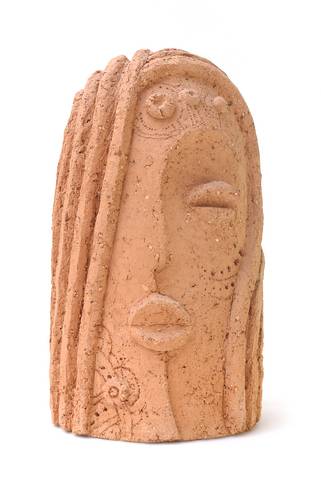Your skin is porous because it has all those little pores that can transfer substances from its surface to your body. The plate you eat your dinner off is not porous. If you put a liquid like water on it, the liquid just sits there and goes nowhere. Now let’s take a look at hair porosity and how it applies to the health of your hair.
If you read the post All About Hair you know that the shaft of your hair is made up of scales. Those scales have everything to do with hair porosity. If the scales on the shaft of your hair are lying nice and flat, your hair will have low porosity. On the other hand, if they’re not lying flat, your hair will be more porous. In general terms, your hair will fall into one of three main categories: low porosity, average porosity, and high porosity.
Who cares?
The porosity of your hair will depend on what products are best to use on your hair. So any goddess interested in having beautiful hair should care about her hair’s porosity.
Quick tests to determine your hair porosity
You can pull that microscope you have stored in your kitchen cabinet and use it to look at sample strands of your hair. What? You don’t have a microscope? That’s okay, neither do I, but that is one quick way to check. Fortunately, there are other ways to test for porosity.
My hair is fairly porous, I know that because it takes forever to dry after I shampoo and because I can feel the roughness on the hair shaft when I run it gently between my fingers. If you use this test, make sure you are running your fingers starting from the root end of your hair.
Another test for porosity is how easily your hair takes up the color in rinses; the more porosity, the faster the uptake of color.
Hair porosity and your shampoo and rinse
The purpose of a shampoo is to remove dirt and oils from your hair. It’s that simple. You can use a simple homemade shampoo that’s good for all hair porosity levels by adding ¼ cup of aluminum free baking soda to ¾ cup water (an empty shampoo container comes in handy for this). Squeeze the mixture onto your dry hair until it is covered. Then massage your scalp for three or four seconds. Leave on your hair for two minutes then rinse thoroughly.
Next, add ¼ cup white vinegar to 1 cup of water and rinse your hair. Note: you can add a little vanilla or a few drops of essential oil to give the mixture a more pleasant smell. One goddess mixes up this rinse in advance and adds a cinnamon stick to give her rinse a spicy smell. After applying the vinegar solution, rinse your hair thoroughly and you’re done. You can also add various essential oils and herbs into the rinse depending on your needs. That’s a whole topic unto itself and will be covered in other posts. You may also want to substitute apple cider vinegar in lieu of the white vinegar. Try them both and see which you like the best (I use the white vinegar).
The above recipe is just one of many you can try. However, it’s important to know that many of the recipes for rinses/detanglers call for glycerin. Based on the research, I would recommend not using glycerin in your formulations if the humidity in your area is less than 65%. Below 65% humidity causes glycerin, which is a humectant, to draw water out of your hair. This can make your hair too dry, particularly if you have high hair porosity.
Now go have fun and relax.
Related articles:


Can vanilla have any added beneficial affects on hair (other than smell)?
Vanilla is purported to be a humectant, however the primary benefit is the aroma.
Whats the difference in affects (generally) between white and apple cider vinegar?
What do you mean by fairly porous…..Low, average or high porosity
Hello Goddess,
Sorry about the confusion. I hope the following explanation helps.
When I say my hair is fairly porous, I mean it is somewhere between low and high porosity. When I run my fingers down the shaft, my hair feels mostly smooth, but not slick. Occasionally, I detect rough areas, particularly as I move my fingers down the hair shaft toward the end (I have long hair). It also takes quite a while for my hair to dry which is another indicator of porosity. Also, my hair is not as shiny as it once was which would also indicate increased porosity.
The ability of hair to shine, is primarily dependent on how well the “scales” (cells on the outer layer of the cuticle) are laying flat against the hair shaft. That’s because light is not reflected as well on a shaft of hair when the outermost cells are not laying flat.
Using relative terms such as low, average and high porosity is vague at best. It’s somewhat like saying a pan of water is hot, warm or cold in that there’s a wide margin for interpretation. When discussing water temperature, you can be very specific by indicating its actual temperature, however the degree of hair porosity remains vague because there has not been developed an exact hair porosity scale.
If you have any other questions, feel free to ask. We love hearing from you.